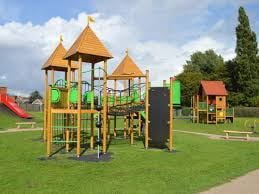It is very clear that the government’s lockdown policies are no longer about protecting the NHS which has ample capacity and is now failing people in many other ways as a result of the fear instilled by the handling of the Covid-19 crisis. On those grounds, one might question why lockdown rules remain in place at all.
However, my argument here concerns a lack of rural proofing of the government’s actions. The latest delays on re-opening parts of the leisure sector and the communication of new restrictions across Lancashire and Yorkshire suggest that no consideration has been given to distinctive rural issues nor to the urban-rural variation in rates of spread or risks to human health. Data from Centre for Towns identifying the rapidly escalating job losses and fears about the future of our graduates are surely more alarming? https://www.centrefortowns.org/blog/51-weekly-bulletin-on-covid-related-job-losses-14th-july
The last-minute reversal of plans to allow closely managed access to sporting events has been devastating for their respective industries, just as the quarantine rule changes have for the international travel sector. The knock on effects have seen other smaller events cancelled simply through fear. They may sound small and trivial but ceramics fairs such as the one in Southwell http://www.ceramicsinsouthwell.org.uk/ , whose cancellation was announced this weekend, are vital for networking, connecting with customers and orienting the work of a number of very small producers whose businesses may now fail. Some agricultural shows have attempted to operate online but these have been unable to recreate the retailing opportunities that are so important for many rural craft businesses.
In business, we all know that uncertainty is the biggest obstacle to firms getting back on track. Sudden decisions informed by the science of small numbers and with insufficient attention to regional difference must be challenged on grounds of being disproportionate and failing to weigh up multiple socio-economic impacts. As restrictions eased, businesses invested in ways to reopen safely so they must be given the chance to earn back that investment with the confidence that if they stick to the rules, they can make plans for the future.
There is, perhaps, just time to save tens of thousands of jobs by easing lockdown measures and maintaining the support and cooperation of businesses who are working so hard to keep trading AND to keep people safe. If these business go to the wall, BOTH the economy and the safety measures employed by businesses will be lost and the result will see poorer-managed and less safe activities taking place across the country – whether that is 1,000s of anonymous people packed on trains to the coast, as we saw last weekend, or growing civil unrest in the face of economic hardship and social breakdown.
I urge the government, and everyone who wants to help our young people, to take action before it is too late.

